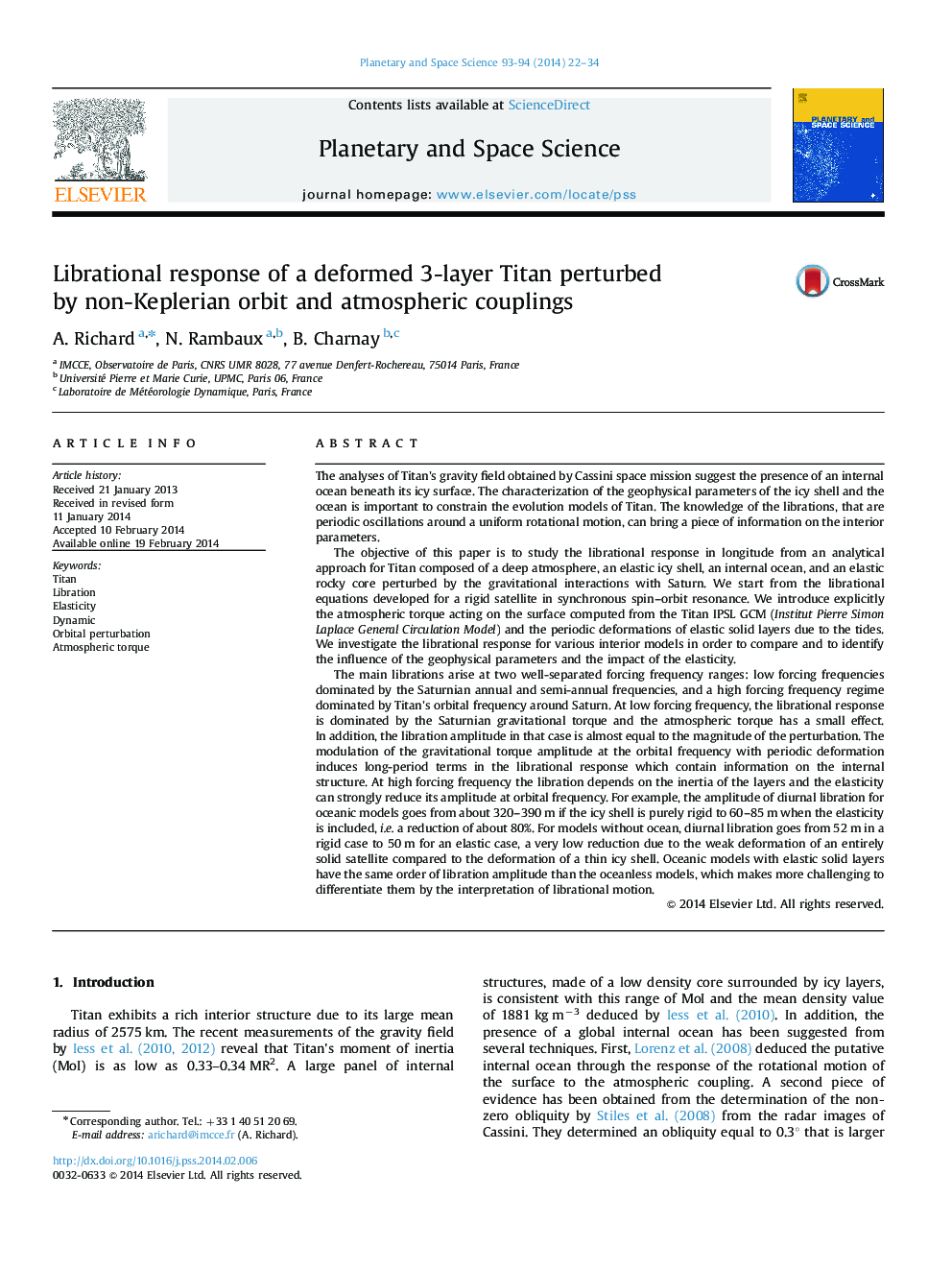| Article ID | Journal | Published Year | Pages | File Type |
|---|---|---|---|---|
| 1781145 | Planetary and Space Science | 2014 | 13 Pages |
Abstract
The main librations arise at two well-separated forcing frequency ranges: low forcing frequencies dominated by the Saturnian annual and semi-annual frequencies, and a high forcing frequency regime dominated by Titan׳s orbital frequency around Saturn. At low forcing frequency, the librational response is dominated by the Saturnian gravitational torque and the atmospheric torque has a small effect. In addition, the libration amplitude in that case is almost equal to the magnitude of the perturbation. The modulation of the gravitational torque amplitude at the orbital frequency with periodic deformation induces long-period terms in the librational response which contain information on the internal structure. At high forcing frequency the libration depends on the inertia of the layers and the elasticity can strongly reduce its amplitude at orbital frequency. For example, the amplitude of diurnal libration for oceanic models goes from about 320-390 m if the icy shell is purely rigid to 60-85 m when the elasticity is included, i.e. a reduction of about 80%. For models without ocean, diurnal libration goes from 52 m in a rigid case to 50 m for an elastic case, a very low reduction due to the weak deformation of an entirely solid satellite compared to the deformation of a thin icy shell. Oceanic models with elastic solid layers have the same order of libration amplitude than the oceanless models, which makes more challenging to differentiate them by the interpretation of librational motion.
Keywords
Related Topics
Physical Sciences and Engineering
Earth and Planetary Sciences
Geophysics
Authors
A. Richard, N. Rambaux, B. Charnay,
